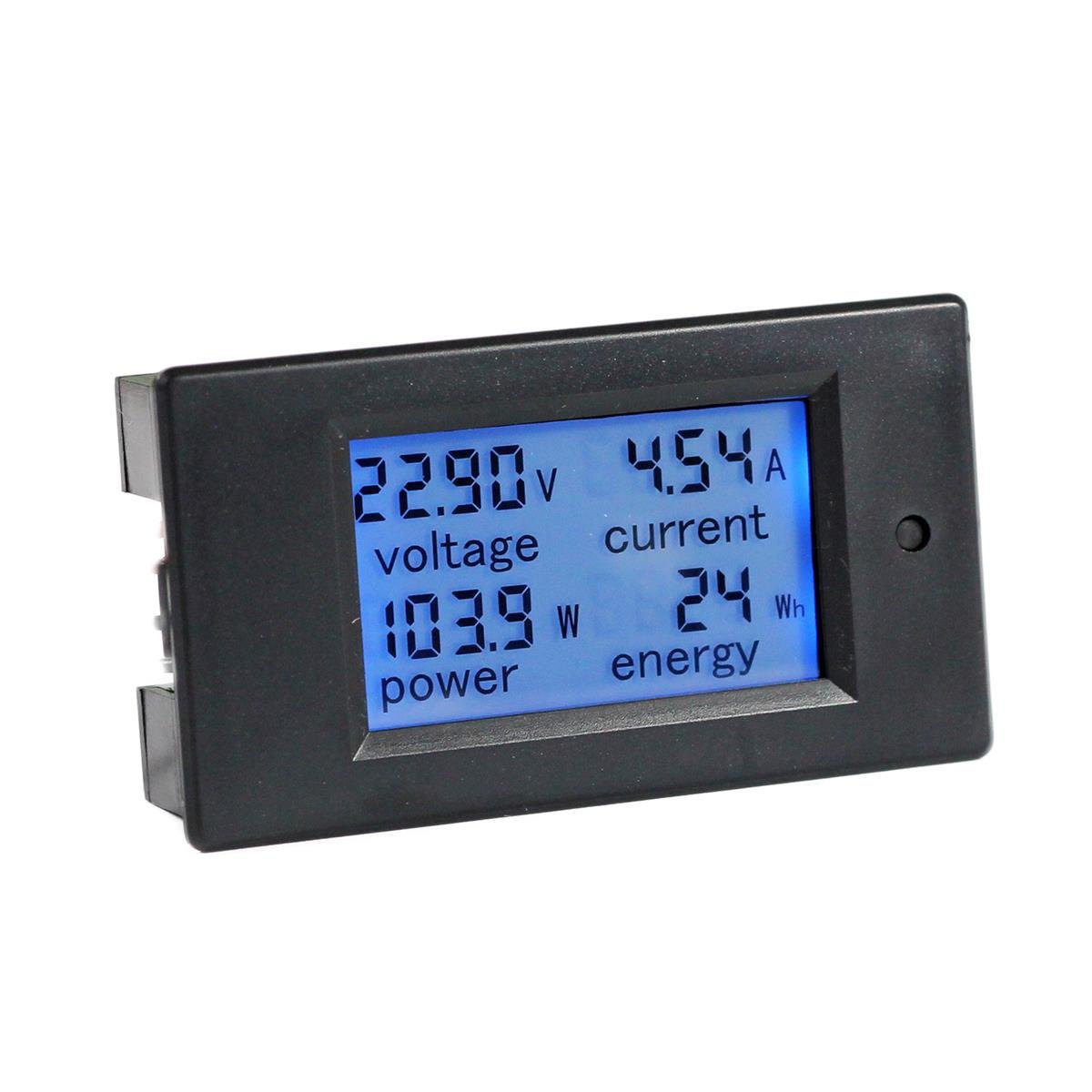
- Brand Name bayite
- Item Weight 8.2 ounces
- Display Type LCD
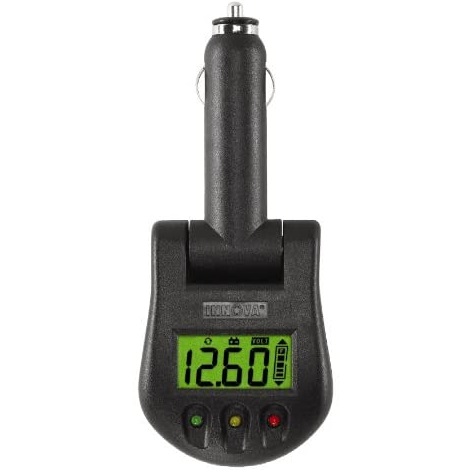
- INNOVA
- Item Weight 3.2 ounces
- LCD display
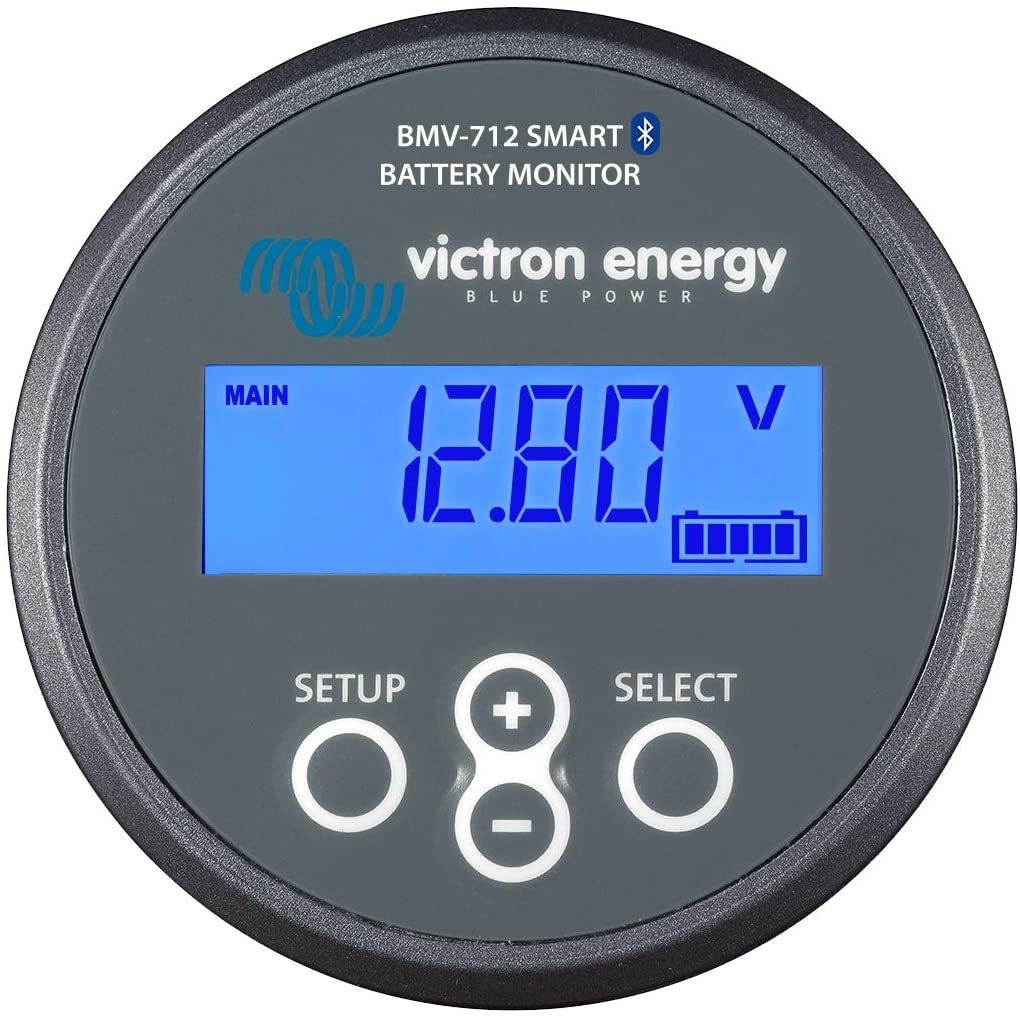
- Victron Energy
- Item Weight 1.63 pounds
- Victron Battery Monitor

- Wenzhou Morning Electronics
- 8 ounces
- DC 100A Battery Meter
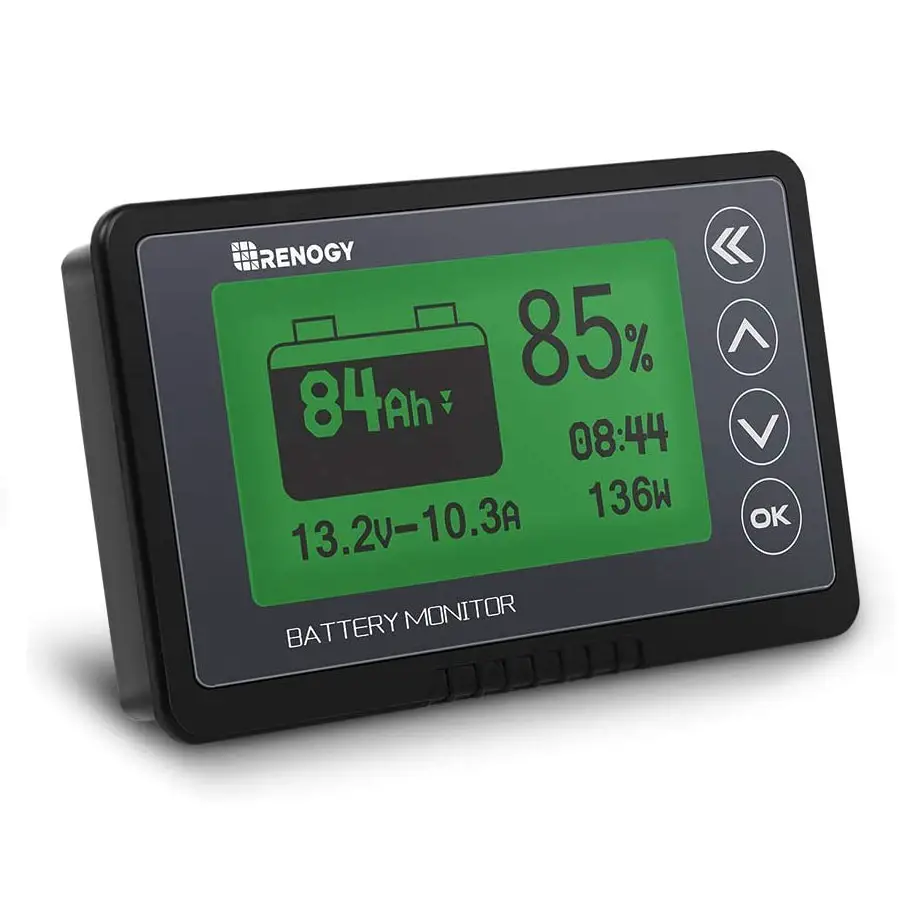
- Brand Renogy
- 3.9 x 2.4 x 0.7 inches
- Item Weight 2.6 Ounces
Choose the Best RV Battery Monitor
Customer’s Choice: the Best Rated RV Battery Monitors
15 users answered this survey. Please help us improve this review!
A battery monitor for an RV is a device that will let you know how much power your batteries have in them. They are very useful when it comes to keeping track of the amount of use and how charged up they might be, which can help prolong their life. You’ll get plenty of information from these monitors on what’s going on with your batteries like temperature, voltage, and more!
Reasons to buy RV battery monitors:
- Having an RV battery monitor is a great way to minimize the risk of not having enough power in your batteries;
- Some models will alert you when one or more of your batteries are running low, and some will even automatically switch over to reserve mode for you;
- This could save hours of time and frustration trying to find out which battery(s) need attention before they die on you during camping season;
- There’s nothing worse than getting all set up at that perfect campsite only to get stuck with no electricity because one (or more) of your batteries died overnight;
So investing in a good quality product might be well worth it depending upon how often you use them and camp without hookups.
The RV is a great way to live the dream and see the country, but it also comes with some unique challenges. One of those challenges is ensuring that your RV battery monitor stays up and running properly. If you find yourself on the road or in the campground without power, there are plenty of solutions for this problem such as generators and solar panels.
But what do you do if you’re at home? This article will provide information about different types of battery monitors, including reviews and tips for choosing one that best fits your needs!
Table of Contents
Bayite DC 6.5-100V 0-100A LCD Multimeter – the Editor’s choice!
 With the Bayite multimeter, you can easily monitor voltage and current for all sorts of industrial and residential appliances including most RV batteries.
With the Bayite multimeter, you can easily monitor voltage and current for all sorts of industrial and residential appliances including most RV batteries.
In addition, it has remote monitoring capabilities so if you’re not home or too far away you can still see your data on any internet-enabled devices or laptops that are linked provided through WiFi or Bluetooth!
Stay protected with an overload alarm function and know for sure whether the reading was successful because the display includes backlight illumination so no matter how dark it gets while working late at night – this multimeter will have all of your info read clearly!
This multimeter is designed for professionals who use high power loads on a daily basis. This product has four functions that are easy to read, have an overload alarm function, and can store energy data when shut off. Impress your boss this year with the best tools at their disposal while still being cost-effective!
INNOVA 3721 Battery and Charging System Monitor – the best for portability!
 The INNOVA 3721 monitor is a compact RV battery monitor with a decent price tag. The product has an easy-to-follow instruction manual, the pivoting ability for visibility, and a decent bar chart reading. The light beside the “charging status” icon will be green if the battery is fully charged or yellow when you should charge your battery soon.
The INNOVA 3721 monitor is a compact RV battery monitor with a decent price tag. The product has an easy-to-follow instruction manual, the pivoting ability for visibility, and a decent bar chart reading. The light beside the “charging status” icon will be green if the battery is fully charged or yellow when you should charge your battery soon.
The display unit pivots so it is perfect for reading even where there are obstructions. This unique design offers many benefits over other comparable products on the market.
This Innova RV battery monitor has a long battery life and is petite in size, yet fits any vehicle. It can be read from afar and allows you to check the status of your RV anytime, anywhere. Say goodbye to all those hours spent tinkering around with unknown cables or limited viewing angles; this great product lets you have instant access to the data stored on your batteries.
Victron Energy BMV-712 Smart Battery Monitor – the best for accuracy!
 With the Victron BMV-712 Smart Battery Monitor, you’ll understand your battery health using precise readings while also taking advantage of a smart and manageable program. With this solid product, installation is straightforward with an enormous vehicle that has significant power needs.
With the Victron BMV-712 Smart Battery Monitor, you’ll understand your battery health using precise readings while also taking advantage of a smart and manageable program. With this solid product, installation is straightforward with an enormous vehicle that has significant power needs.
The Victron BMV-712 is a heavy-duty RV battery monitor and offers extreme functionality. It has Bluetooth connectivity and displays amp-hours, which will come in handy on long travels where there is no power source for the near future. Along with that, it features a substantial battery shunt to provide precise readings without any worries or confusion.
MORNING GROUP DC Multifunction Battery Monitor – the best for the display!
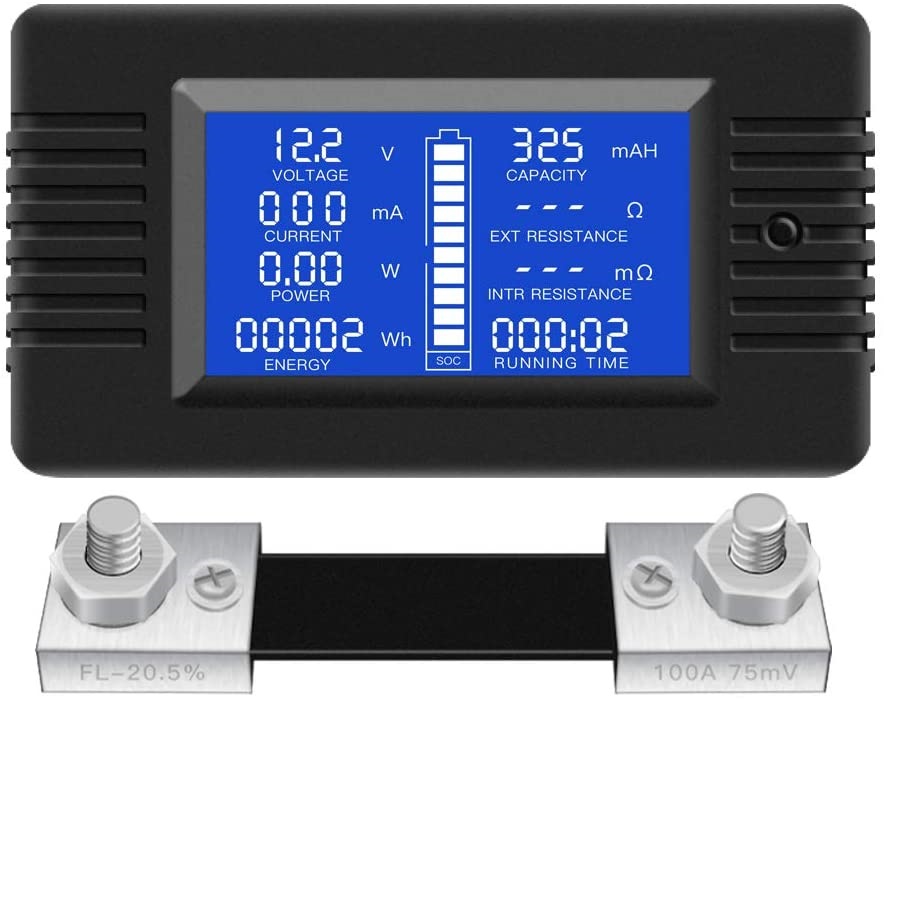 If your DC system is feeling a bit out of whack, then you need the Morning Group DC Multifunction Battery Monitor!
If your DC system is feeling a bit out of whack, then you need the Morning Group DC Multifunction Battery Monitor!
The blue backlight can be turned on or off manually so there’s no worry about charging– just do what works best for you. No screws design means insertion is quick and simple without predrilling either!
And if that weren’t enough, affordable pricing makes one last feature stand out for most users: affordability.
The MORNING GROUP DC multifunction battery monitor is a compact and affordable device that power users use in conjunction with a solar panel. It shows the voltage of every single battery compartment in the system at all times for any location on your property.
Renogy 500A Battery Monitor – the best for versatility!
 One of the most important aspects of owning an RV is properly maintaining your battery bank. The Renogy 500A Battery Monitor has you covered with many versatile features that keep your batteries in optimal condition, including voltage monitoring and real-time current. It is incredibly easy to install – only wiring it into the system requires minimal time and expertise.
One of the most important aspects of owning an RV is properly maintaining your battery bank. The Renogy 500A Battery Monitor has you covered with many versatile features that keep your batteries in optimal condition, including voltage monitoring and real-time current. It is incredibly easy to install – only wiring it into the system requires minimal time and expertise.
The Renogy Battery Monitor is a cost-effective option for people with small to midsize battery banks. Make sure your RV’s battery bank stays in its peak state with this handy device that has tons of features and can be installed in just minutes.
The Buyer’s Guide
Benefits of Using A Battery Monitor:
Monitoring Functionality:
While all battery monitors have a monitor function, not many include additional features. Many just provide you with the voltage of your batteries while others also give other information such as amps and temperature. It really depends on what type of monitor you need for your RV or boat.
If it is only going to be used once in a while then an average monitor will work fine but if the batteries are always being drained from things like solar panels or wind turbines then consider getting one that provides more detailed feedback about how much current is flowing through them at any given time.
The best RV battery monitors provide even more functionality than simple voltmeters by offering data about power output over time which allows owners to get accurate readings on load levels and capacity remaining no matter how long the battery is in use. It can then be combined with other information such as time to recharge or fuel consumption rates in order to determine how efficient you are at using your batteries.
Notifications
If you are not going to be on the battery most of the time then you will want a monitor that can alert you when something goes wrong. Not all monitors have this functionality but many do and it is very useful in preventing damage from leaving your batteries dead for too long or letting them become overcharged if they go unused for extended periods.
By getting an RV battery monitor with alerts, you avoid having to check your batteries every few hours or before boondocking which allows owners more freedom while maintaining peace of mind about their system’s health.
The best models provide customizable alarms so users know exactly what level each reading means. For example, some choose loud beeps while others prefer flashing lights because these notifications work even at night while asleep in the RV.
The top models also come with software support that provides even better control over settings such as notification intervals, voltage thresholds, etc., allowing users full customization based on individual preferences. It may take some time but it is well worth taking the extra step because if you are serious about maintaining your batteries then you will need to invest in something with this kind of capability.
Measurement and Forecast of Battery Voltage and Capacity
A common issue with battery monitors is that they only display voltage while the best ones provide users with additional data about power capacity. This allows them to get an idea of how much reserves are left on their batteries that can make all the difference when it comes time for recharging or even determining if you need a new one altogether.
With some models, this information may not be very accurate but at least it gives you some indication of whether your RV or boat needs servicing in order to maintain maximum efficiency and safety during use. If nothing else, knowing exactly what level your batteries are at helps owners avoid being caught by surprise so having these kinds of features included really does raise a monitor’s value quite significantly.
Versatile Tool
Lastly, the best RV battery monitors are designed to be used on a variety of different types and sizes. They come with multiple connection options but most work for 12V batteries while some can handle 24-volt systems as well so it is important to check compatibility before purchasing one.
An RVer or boater should get one that works whether they have an AGM or flooded type and this will depend on your individual preference so make sure you compare features carefully before making a final decision about which model to buy.
The very best battery monitor models also provide additional functionality such as complete system monitoring via software download along with data logging capabilities throughout various stages of use including charging, discharging, recharging, etc., allowing users to get accurate information over time so they can determine how efficient their system is.
Easy to Use
A common complaint with battery monitors is that they are difficult to install but the best ones actually have simple setup procedures. Just plug them in and you can be guaranteed accurate readings within seconds so there is no need for complicated wiring or installation that makes it possible for users of all experience levels to get full protection for their batteries without any problems whatsoever.
Types of Battery Monitors:
1) Deep Cycle Batteries
These batteries are usually rated in amp-hours and used for deep cycle application. They can’t be charged quickly, so they should not be used in vehicles that require a lot of power to start the engine.
Deep-cycle batteries are common on RVs with large battery banks because they can handle being drained down many times throughout their lifespan without showing signs of wear or shortening their life expectancy.
The best RV monitor will show you this information about your battery bank if it is connected via an amp-hour meter that gives you the data about how much energy has been consumed by appliances over time.
2) Lithium Batteries
These are some of the best RV battery banks to have on an RV. They are lightweight, have a long life expectancy, and can handle being drained down many times without showing signs of wear or shortening their lifespan.
Lithium batteries produce very little heat when compared with other types of deep cycle batteries, so they don’t need any extra ventilation fans in your vehicle which makes them ideal for RVs because space is at a premium! They are maintenance-free which is another bonus.
Lithium batteries are expensive, so you need to have an accurate monitor that shows how much power they have consumed over time.
Main Features:
Accuracy
The best RV battery monitor will need to be able to give you accurate readings of your batteries. This means that it should have an accuracy score of at least +/- 0.25 volts, which is the standard for most products in this category when used under good conditions.
This parameter can vary depending on your requirements, so keep in mind that you need to consider it before finalizing a purchase decision. If you only want a battery monitor with basic functions, then any product with this kind of positive rating should work well enough for what you need.
However, if you are looking for something advanced or high-end, then accuracy becomes much more important as it would affect how much information about the state of your batteries gets displayed by the device itself over time (more accurate devices tend to provide better information with fewer errors).
Current Range
Checking the output of your RV’s battery or batteries is one way to ensure that they are being properly tested. Although this may be true, it is critical to have an RV battery monitor with a wide current range reading, such as 0 to 100 amps or 0 to 500 amps, in order to verify that different batteries have varied current outputs.
A typical RV battery monitor has a current range of 0 to 20 amps, which is not large enough for testing two separate 12-volt batteries. In fact, a pair of “deep cycle” or marine batteries may have up to a 100-amp output when being charged by an engine-driven alternator. If you test the voltage at the batteries with your RV’s battery monitor and get a reading from each, this will indicate that one is providing more power than the other is.
Voltage Range
As was the case with the current range, a typical RV battery monitor may read from 0 to 15 volts. This is enough for most recreational vehicles and will provide accurate readings of 12-volt batteries under normal conditions.
To test your two separate deep cycle or marine batteries that are wired together in parallel, you need an RV battery monitor capable of displaying voltage levels within this same range as well as being able to go higher (e.g., 13 or 14 volts). However, when it comes to testing automotive or marine batteries that are not attached to your RV or campervan, this is where voltage range becomes important.
A typical 12-volt battery measures about 12.75 volts when new and typically drops off the charge curve after use over time. This means that if you have a fully charged deep cycle battery in your recreational vehicle which has an output level of 13 volts, there will be enough electricity left for starting purposes even though the battery’s overall state of health may indicate otherwise.
Display
Every RV battery monitor must have a display that can easily be read from a distance. This is important for those who rely on their recreational vehicle’s batteries to power appliances and other equipment while away from the dock or shoreline. The best type of displays are large, LED-lit numbers which allow you to quickly determine if something isn’t quite right with your deep cycle batteries’ voltage levels.
If you don’t want to spend hours behind the wheel squinting at a small screen, be sure that any battery monitor you consider has an easy-to-read (larger) display because smaller screens might make it difficult for drivers who need glasses while driving down the road to read all the information displayed on them.
Battery Shunt
A battery shunt is what actually reads your RV’s electrical power levels after it has been converted by an inverter. This type of device should have a large input so that you can attach the appropriate size jumper cables or clamps to determine whether or not your auxiliary 12-volt batteries are sufficient for starting larger engines, powering appliances inside your recreational vehicle without running out of energy, and/or recharging them via solar panels while driving down the road.
The best types of shunts will have their amps noted on one side with voltage being represented clearly on the other half in order to facilitate quick readings about how much electricity you’re either producing from sunlight (i.e., solar panels) or receiving shoreline hookups at campgrounds and RV parks.
A good battery shunt should be relatively inexpensive and easy to use. You open it up, attach the appropriate size clamps or jumper cables (as noted by its manufacturer) and then close it back up again until your next reading while monitoring how much electricity is either being produced from sunlight or received via shoreline hookups at campgrounds and RV parks.
Another key aspect of a quality battery shunt is that it reads accurately in both 12-volt DC as well as 120-volt AC power levels which means you can also determine exactly what kind of energy resources are available on any given day based on everything from solar panels (12 volts), electrical hookup capabilities (120 volts), etc.
Bluetooth Connectivity
Most modern RVs utilize this type of technology in order to facilitate wireless video gameplay on larger television screens while traveling down the road, so having an RV battery monitor which is capable of doing something similar shouldn’t come as much surprise.
With a Bluetooth-enabled battery monitor, you should be able to connect it with other devices wirelessly in order to start larger engines and/or appliances inside your recreational vehicle before determining whether they’re fully charged (measured at 12 volts) or not.
Another key aspect about these products is that the wires tend to get tangled up easily so if you need something which will keep track of everything wirelessly while simultaneously staying untangled and ready for immediate use whenever needed, then go ahead and choose one equipped with Bluetooth connectivity.
Readings and Functions
A quality RV battery monitor should provide you with accurate readings about how much electricity your auxiliary batteries are producing, receiving, and/or capable of outputting at any given time.
You’ll want something which provides steady readings without fluctuating too rapidly between high and low voltage levels because this could cause damage over the long term; it shouldn’t take more than five seconds for everything to settle into place after adjusting its settings before presenting you with accurate data.
Size
Another aspect worth mentioning is that many quality RV battery monitor screens tend to be relatively small in size. This might make it difficult to read all the information displayed on them especially if you need glasses while driving down the road.
Fortunately, larger models designed specifically for truck drivers who spend long hours behind the wheel would work just fine as well although they cost a bit more money compared to their smaller counterparts that function equally well when used in recreational vehicles.
Alarm systems
If you decide on one equipped with an alarm system, then it should be loud enough for you to hear from any part inside your vehicle without being so harsh as to startle those who are sleeping nearby or attract too much attention from other motorists traveling alongside you on busy highways.
The best RV battery monitor systems have different kinds of alerts available such as tone sounds and/or Bluetooth notifications sent directly to smartphones or tablets. They shouldn’t be too harsh but instead easy-to-hear (not startling) from any part inside your vehicle.
Installation
Another important aspect to consider is that some battery monitors are designed for constant use while others can only be used temporarily. This has everything to do with how they’re installed.
For example, if you decide on one of the best RV battery monitor models which install directly into your vehicle’s 12-volt DC power socket by plugging it in and flipping a switch.
Those monitors that don’t have any additional components required during the installation process will be perfect if all you truly require is an auxiliary energy resource display just for recreational vehicles since these types won’t provide accurate readings about the status of your accessory batteries when you’re not on the road.
Warranty
Be sure that the RV battery monitor you choose comes with a warranty good for at least 1 year after purchase because this will provide extra protection in case your device malfunctions or fails within its first 12 months of use.
Be sure to check what kind of warranty is available on any model before buying it so customers have some additional protection if their devices malfunction or fail within twelve months of being purchased.
Mounting
Where you mount your battery monitor can make a difference in how accurate it is. If you’re looking to get the most accurate reading, try mounting it on the negative terminal of one of your batteries (i.e., not between two terminals).
A battery monitor should be mounted near the batteries. You can buy a separate mounting kit or use something you have at home.
For example, if you are using plywood, drill holes for screws and mount it on top of the plywood so that it sits flush with the surface. Then place your batteries under this board to ensure adequate space between them and any metal parts in case they start leaking acid. Once attached properly, make sure there is also enough room around your monitors to allow airflow as well as easy access by yourself or service technicians when needed.
Accessories
They’re normally very easy to install and some even have an adhesive backing so you don’t need any tools or nails except for maybe a screwdriver if you want it mounted on wood instead of drywall.
Most units also include an extension cord that allows them to hang down from a power source up high, like a cabinet door handle or perhaps another appliance near where they’ll get plenty of sunlight during the day hours. This is perfect because solar panels alone may not provide enough energy all at once depending upon how long you plan to use appliances without being plugged in.
Other accessories that typically come with these products include a remote sensor which makes it possible to check on your batteries from inside the house, as well as an extension cable that allows you to run the wire out of sight and through tiny openings like windows or doorframes without causing any damage (such as by drilling holes).
There’s also a USB port for those who would prefer not to have anything plugged into their power outlets at all times in order to avoid draining them accidentally.
Finally, some units have more than one display screen so you can see what’s going on with both batteries simultaneously instead of flipping back and forth between two monitors everywhere you go. This is especially helpful if each battery has its own set of cables because it means you don’t have to worry about carrying a bulky pair of clamps that would be difficult to fit into small spaces.
Is it Programmable?
The best RV battery monitors are the ones that allow you to program alerts for different situations, such as low voltage or too much current draw. These features become especially important if your batteries happen to be located in an area where they can’t get direct sunlight, like under a tree or another object which blocks out light from above.
You may want these devices programmed so that even if your house isn’t fully charged yet, they’ll automatically shut down after 10 minutes of non-stop running until more juice is available (which shouldn’t take much longer because they’re designed to hold a charge for over 12 hours).
Some units are even capable of switching between different modes depending upon whether or not your motorhome is plugged into an outlet. It’s important that any device you buy has this ability so it can provide accurate readings at all times without being reset.
You should also look for battery monitors that have adjustable sensitivity levels in case certain clues aren’t picked up right away by default parameters.
For example, you can make it so that your devices will only show an “X” on the screen if they detect more than 50% of their battery life has been used up (instead of something like 25%) which makes it easier to accurately track this information without having to constantly go back and forth between two or three different displays.
Is It Waterproof?
If possible, you should look for RV battery monitors that are waterproof because some may be damaged by rain, sleet, snow, or other forms of precipitation. This is especially true with exterior models since there’s always a chance someone could accidentally leave them out in bad weather conditions when camping outdoors overnight.
The best ones have sealed casings composed mostly of rubberized plastic along with metal components so they can withstand impact from falling or being stepped on without breaking apart.
Some products even feature an extra layer of protection by way of silicone seals to prevent water and other contaminants from entering the internal circuitry as well as cable ports which provide additional insurance against corrosion caused by humidity, heat, and cold temperatures.
Is the Firmware Upgradable?
Finally, some of the best RV battery monitors on the market today are also capable of being upgraded with firmware patches if new issues crop up in future models. For example, let’s say you buy one that doesn’t come with a warranty but you discover it has no way to alert users when the main power goes out due to an outage or other issue at the source (like during blackouts).
You could contact customer service about upgrading your product so it can tell you whenever this happens instead which would be especially useful for anyone who lives alone and uses their motorhome as a full-time residence. These updates usually require downloading from manufacturer websites along with instructions from tech support personnel who may have to remotely access your device via internet connection depending upon how complicated the upgrade is.
Price
The price range for RV battery monitors will vary depending upon what you need them for but it’s always better if you find one that provides a lot more than just basic functions at a low cost instead of buying something more expensive that doesn’t have many bells and whistles. Check reviews first before investing in any product because this is often where customers discuss its value-to-price ratio along with how easy it was to use or install.
For instance, if you buy a cheap model that doesn’t have many programming capabilities but only costs around $40 to $50, it may not be worth the money considering how much more expensive models with similar features are usually priced at (with an average cost of between $100 and up).
On the other hand, buying something too advanced for your needs could also end badly because there’s no point in paying extra just so you can run small appliances like cell phone chargers without having to worry about running out of energy before they’re done charging.
How to install an RV battery monitor?
You’ll need to mount the display unit on a flat surface using screws, glue or double-sided tape depending upon how permanent you want it to be. Some products also come with suction cups that can attach directly to glass which is great for anyone who wants their RV battery monitor in plain sight at all times so they don’t forget about recharging batteries after every use.
The cables should reach wherever your 12 volts are located without any special tools so you won’t have extra expenses tacked onto installation costs unless additional parts are required like daisy chaining adapters, fuses, and other items needed for compatibility between different pieces of equipment (especially if there’s no instruction manual included).
When disconnecting these wires during maintenance or repairs, be careful not to damage any of the internal components because that could render your device useless which is why it’s best if you have a manual on hand so you know how to properly remove these without breaking anything.
How to use an RV battery monitor?
Once you’ve installed your RV battery monitor, it should be easy to use as long as the instructions are clear and concise. To test if it’s working properly, plug in a small appliance like cell phone chargers into AC outlets located near where your 12-volt batteries are located (or wherever else they’re kept).
This will allow you to see how much energy is left before recharging if there’s no power indicator on appliances or any other ways of knowing when these need charging. Depending upon what kind of RV battery monitor you buy, some products may also have alerts that go off every time one runs low so this step isn’t necessary but can reduce stress levels for anyone who worries about using their motorhomes’ amenities too often without making sure everything is fully charged first.
Depending upon the features and quality of your RV battery monitor, some versions may even have GPS tracking so you can find out where to get new batteries if yours go completely dead without any warning signs beforehand. This feature is especially useful for anyone who isn’t familiar with their motorhome’s layout or areas around it because it creates a map that shows coordinates on Google Maps along with how far away each location is from where you’re currently located (and vice versa).
If there are several 12-volt outlets in different parts of your vehicle, most products will also allow users to switch between amperage settings which helps determine what appliances use more energy than others while also trying to avoid having these all plugged into high-amperage outlets at the same time (which can cause overloading which reduces overall efficiency).
This allows people to conserve energy and prolong battery life for everyone who wants their RV battery monitor to be as useful as possible. It’s also a good idea to turn off any appliances that aren’t in use while you’re away from your motorhome because this will prevent them from draining power while they’re not being used.
How to read RV battery monitor:
- Voltage, current, and percentage charge are the most common readings;
- Also, it shows battery % capacity, average voltage during last cycle or 24 hours, minimum voltage during the same period, maximum voltage during the previous hour, and time of this measurement since reset button was pressed;
- It shows amps used for the last 24 hours, watts being produced by solar panels, and time since the system was reset;
- For battery life – hours left to run based on percent capacity and average voltage over past 7 days or 30 cycles which is useful if you want to know how many hours of energy it still has in reserve before you need to recharge/replace it;
- It also shows maximum load during that period so you can use this information when deciding what appliances are most likely going to drain your batteries faster than others;
Care and maintenance tips:
- Keep the area around it clean and free of dust;
- Clean terminals if they get dirty or corroded which can cause inaccurate readings. Use baking soda and water paste with a toothbrush for best results followed by wiping them down thoroughly with a dry cloth;
- Do not let your battery get too low before recharging which can happen if you leave something plugged into an outlet connected to the battery while camping without taking precautions like switching off electricity at the main switchboard first (some people do this out of habit even though they shouldn’t);
- If you’re not going to be using it for an extended period of time, make sure you disconnect the battery from everything else when leaving your RV unattended or possibly risk causing permanent damage if it’s not charged enough before going into storage during winter months;
- If you have a backup generator, make sure not to run appliances directly from your batteries as well since this will drain them faster than normal while the engine is running and could potentially damage them in some cases depending on how low battery voltage drops before automatically beginning recharging cycle again;
- The best way of handling things would be using an inverter connected to the main AC shore power supply with two different circuits between the shore power cord and generator port (one circuit runs through inverter allowing the use of both 110-volt outlets at once without causing overload);
- Make sure you always have enough water in all of your storage batteries since this is an important factor when it comes to deciding what type and brand of the battery would work best for you depending on how often they are discharged over time;
Comparison of RV Battery Monitors
In this table, we compare various indicators of RV battery monitors. Battery monitors are essential devices for monitoring the state of charge and health of the batteries in recreational vehicles (RVs). These monitors provide valuable information to RV owners, allowing them to efficiently manage their battery usage and prevent unexpected power failures.
| Indicator | Description |
|---|---|
| State of Charge (SOC) | The percentage of battery capacity currently available. |
| Voltage | The voltage level of the battery. |
| Current | The flow of electric charge into or out of the battery. |
| Battery Health | An assessment of the battery’s overall condition and performance. |
| Temperature | The temperature of the battery, which can affect its performance. |
| Alarms and Alerts | Notifications for low voltage, high temperature, or other battery-related issues. |
| Data Logging | Ability to store historical battery data for analysis and troubleshooting. |
This table provides an overview of the key indicators commonly found in RV battery monitors. State of Charge (SOC) indicates the current battery capacity, expressed as a percentage. Voltage refers to the electrical potential difference across the battery terminals. Current represents the flow of electric charge in or out of the battery, measured in amperes (A). Battery Health provides an assessment of the battery’s overall condition and performance, usually based on parameters like internal resistance and capacity. Temperature monitoring helps prevent overheating or cold-related issues. Alarms and alerts notify the user of critical battery conditions, such as low voltage or high temperature. Data logging allows users to access historical battery information for analysis and troubleshooting purposes.
When choosing an RV battery monitor, it is important to consider these indicators based on your specific needs and preferences. Some monitors may offer additional features or more advanced functionality beyond what is listed here.
FAQ
Do you need a battery monitor for your RV?
A battery monitor is a device that displays important information regarding your RV’s batteries. This includes the voltage of each one, their overall charge level, and any changes in these readings over time. Some are also able to detect problems with individual cells or cables, while others can display data from more than just the main house/starting battery bank.
A good example would be an inverter charger that has its own separate auxiliary power supply system – if you have this type of setup, it will require some extra monitoring equipment.
By knowing how much energy your batteries have stored at all times, whether they’re being charged by shore power or an onboard generator, you’ll get a better idea of when to use appliances that cause large drains on them (i.e. the microwave). This is because you won’t be draining your batteries beyond 50% or 60%.
How do battery monitors work?
There are two main types of battery monitors, so it’s important to understand how they work before making a decision.
The first type is the more basic style with just one or two lights on your control panel that indicate whether you have power, need to recharge batteries soon, and what condition the batteries are in.
These simple systems typically cost less than $100 but aren’t very accurate either way – they don’t tell you much about exactly where things stand when it comes to charging status. And most won’t even switch between powering devices or recharging your RV batteries automatically; it’s up to you to remember which should be used at all times!
The second kind of monitor has multiple indicator lights along with an LCD display that show voltage levels for all your batteries if they’re charging or discharging, whether you need to disconnect from shore power soon, and the status of any loads that are currently being powered.
These can cost anywhere between $200-500 but have a lot more accuracy than basic light monitors. Some even come with remote sensors so you don’t have to bend down under your RV’s hood every time things change!
How do you monitor your deep cycle battery?
There are 3 primary ways to monitor your deep cycle battery:
- A voltage monitor will not accurately tell you how much energy your battery has left because it only measures volts and not amps. It’s best to use a voltmeter as well if you have one for this purpose. You can also consider buying or renting an amp hour usage tester that hooks up between your deep cycle battery and electrical system so that you know exactly what it takes to charge back up again after each time being used;
- The second way of monitoring your deep cycle batteries is by keeping track of the hours on them with something like a timer plugged into the cigarette lighter socket in your RV (make sure not to plug anything else into these sockets since they’re for 12V only). This will tell you how many hours on the battery. You can then use that number and divide it by your amps per hour to determine roughly how much energy is left in there;
- The third way of monitoring your deep cycle batteries is likely the most accurate but also the least convenient since you would need an amp-hour usage tester hooked up between each one and a digital voltmeter as well as some extra wiring. But if you want to know exactly what’s going on with those batteries, this method gives you all of those details like volts, amps being used/charged back up again, watts being drawn from them, etc. It’ll give you a complete picture so that nobody gets stuck with a dead battery and no way of knowing why or how to fix it;
What size battery monitor do you need?
The size of your battery monitor depends on the number and type of batteries that you want to connect. You can also see it as the maximum current capacity (in Amperes) that a certain model will be able to measure and readout. If you have more than one battery, experts recommend getting a larger unit. Make sure not all devices are using up their power at once – otherwise if they try to draw too much from it; they might damage your batteries!
For example, The LinkPAL Battery Monitor has an acceptable range between 0-600A (and must be within this limit). This means for two 100 Ah 12V batteries, only around 15% or less is allowed per hour before damaging them! A 200Ah 12V battery will have a range of 0-100A which is still fairly low, so keep this in mind when you’re choosing between one or the other.
How do you hook up a battery monitor to an RV?
There are two main ways to hook up an RV battery monitor:
- The first method is by hard-wiring the device into your vehicle, which means that you must cut into the wiring of your car or truck and insert a special connector for this purpose;
- Another way is by using a number of alligator clips on each end – one connected to the terminal of the positive post (red) on your auto battery, and one attached to some metal part near where it will be installed in your camper (or any other place with access to ground);
If your RV battery monitor doesn’t come with any sort of hookup cables, make sure to buy them at the same time. You’ll need two or more when installing an energy monitor in your car; there are usually three prongs on each end (positive/negative and ground).
Does the camper battery charge when plugged in?
Yes, if the camper is plugged into shore power. The battery will charge when it has all of its capacity used up. It also charges while driving down the road but not as efficiently because there are other loads on the alternator that need to be supplied first, like powering headlights and running appliances inside the motorhome itself.
Where should you wire your RV battery monitor?
There are 3 main options:
- between your negative bus bar;
- next to the solenoid (battery disconnect switch);
- on either side of your fuse panel;
Experts always advise against wiring it directly onto any wires as this can cause issues with voltage drop and false alarms. Plug-in models usually come with some really long cables so installation should be easy regardless of which option you choose! You don’t want to run the risk of not having it where you need it, so make sure to take measurements ahead of time.
How can you monitor your RV power usage?
One of the best ways to monitor your power usage is with an RV battery monitor. These monitors are placed between your batteries and whatever device you want to use them in, like a camper or boat. This allows it to tell how much energy is being used by that item so you can see if it’s working properly. They’re very useful for people who don’t know what they should be doing when charging their batteries or trying different devices out on the road.
How do you check the charge on your RV battery?
First, you need to know the voltage of your battery. If it is a 12V or 24V then just multiply that by two and that should give you the correct voltage. In most cases, this will be at least 13 volts for batteries with no load on them – meaning if they are not being used in any way such as starting an engine.
You can also use a voltmeter to check the voltage of your battery. These can be purchased at most auto parts stores and many hardware stores.
How do you hook up dual battery monitors?
You can use a dual battery monitor to check the status of both batteries and provide readings for things like voltage, current, and temperature. You usually hook up monitoring devices in pairs by connecting them all together with wiring that is used specifically for these types of applications. These monitoring devices are often installed on the positive side of each battery, but there may be cases where you need to install them on both batteries if one is not enough.
How do you monitor dual battery voltage?
The best way to monitor battery voltage is by using a product like the Relion 201 True RMS Single or Dual Display Digital Multimeter. These can be used for dual batteries and provide readings of things like voltage, current draw, temperature, and millivolts.
Why is a battery monitor important for an RV?
A battery monitor is crucial for an RV because it helps you keep track of your battery’s state of charge and ensures you have sufficient power for your electrical devices. It prevents overcharging, undercharging, and battery damage, allowing you to optimize battery performance and extend its lifespan.
What are the key features to consider when choosing an RV battery monitor?
When selecting an RV battery monitor, important features to consider include:
– Accuracy: Look for monitors that provide precise voltage, current, and capacity readings.
– Display: Choose a monitor with a clear, easy-to-read display that shows relevant information.
– Alerts and Alarms: Opt for a monitor that offers customizable alerts for low voltage, high voltage, and low battery capacity.
– Shunt or Shuntless: Decide whether you prefer a monitor that requires a shunt installation or one that operates without a shunt.
– Data Logging: Consider if you need a monitor that can log historical data, allowing you to track power consumption patterns over time.
Can an RV battery monitor help prolong battery life?
Yes, an RV battery monitor can help extend the life of your battery. By providing accurate information on the battery’s state of charge, a monitor enables you to avoid deep discharges and overcharging, which can significantly impact battery longevity. With proper monitoring, you can take timely actions to maintain the battery’s health, such as adjusting your power usage or recharging when necessary.
How can a battery monitor help prevent battery-related issues during camping trips?
A battery monitor plays a vital role in preventing battery-related issues during your camping trips by:
– Monitoring State of Charge: It keeps you informed about the remaining battery capacity, ensuring you don’t drain the battery excessively and get stranded without power.
– Voltage and Current Monitoring: By tracking voltage and current levels, it helps you identify any irregularities that may indicate problems with your electrical system or appliances.
– Alarm and Alert Systems: Many battery monitors have customizable alarms and alerts that notify you when the battery voltage is too low or too high, helping you take appropriate actions to avoid damage or power loss.
– Power Consumption Tracking: With accurate power usage information, you can manage your energy usage effectively, preventing overloading the battery and ensuring a smooth camping experience.
Are there wireless RV battery monitors available?
Yes, there are wireless RV battery monitors available on the market. These monitors use wireless communication technology to transmit battery information to a display unit inside your RV. Wireless monitors eliminate the need for running cables or wires between the battery and the monitor, providing a more convenient installation process. They allow you to monitor your battery’s status from a distance and often offer additional features like smartphone integration for remote monitoring.
Can an RV battery monitor be used with different types of batteries?
Yes, most RV battery monitors are compatible with various types of batteries, including deep cycle batteries, AGM batteries, gel batteries, and lithium-ion batteries. However, it’s important to check the specifications of the battery monitor to ensure it supports the specific battery chemistry you have in your RV. Different battery types may have different voltage characteristics, and the monitor needs to be able to accurately measure and interpret the data from your battery for reliable monitoring.
Useful Video: DIY RV battery monitor install simple Drox AiLi
Final thoughts
The RV battery monitor is a great tool for ensuring that your vehicle remains charged and ready to go. If you’re not sure which type of battery monitor best suits your needs, then keep reading! To help you find the battery monitor that best suits your needs, the experts have compiled a list of reviews and tips to get you started. Hopefully, this guide has been helpful in guiding you towards making an informed decision on which RV battery monitor is right for your home or business!



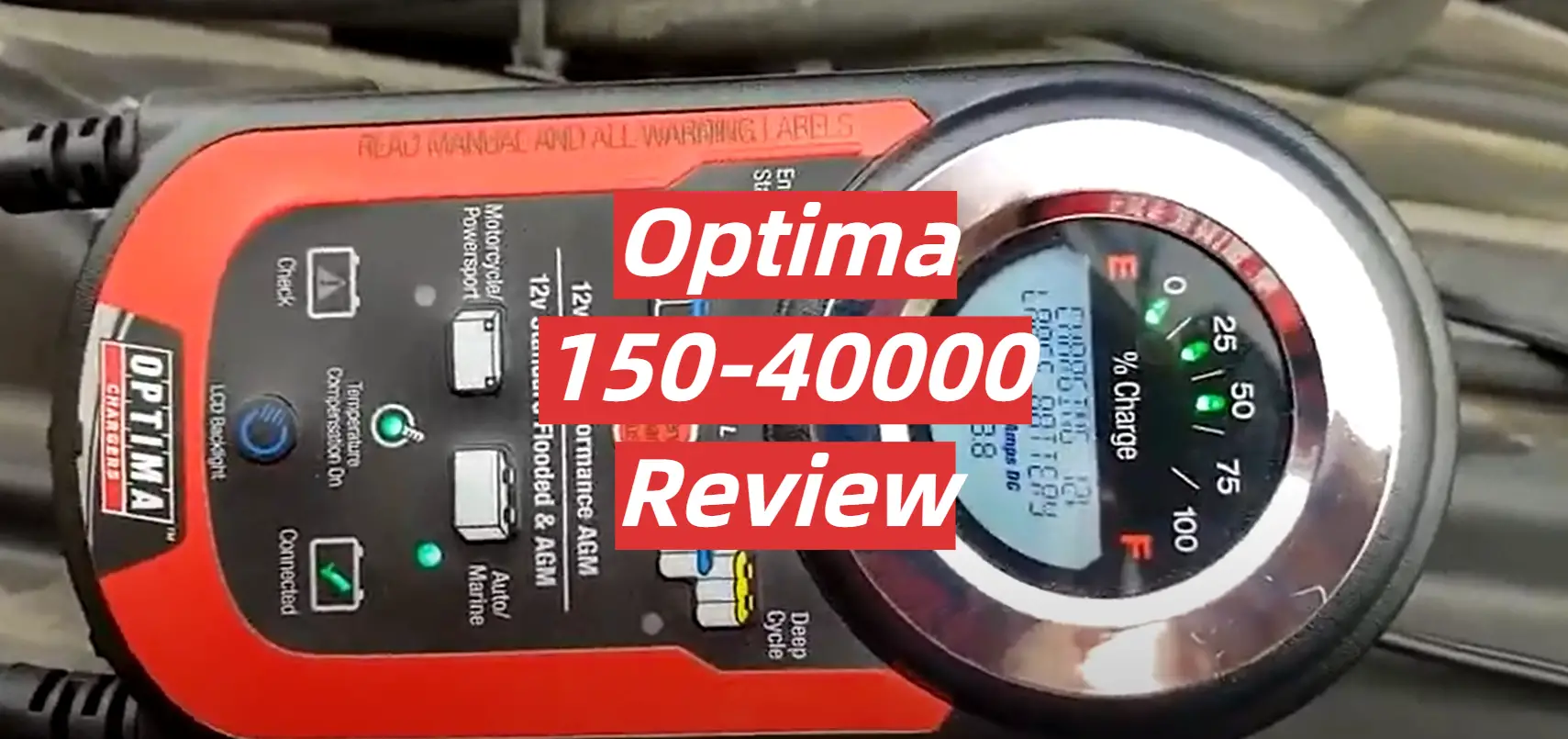

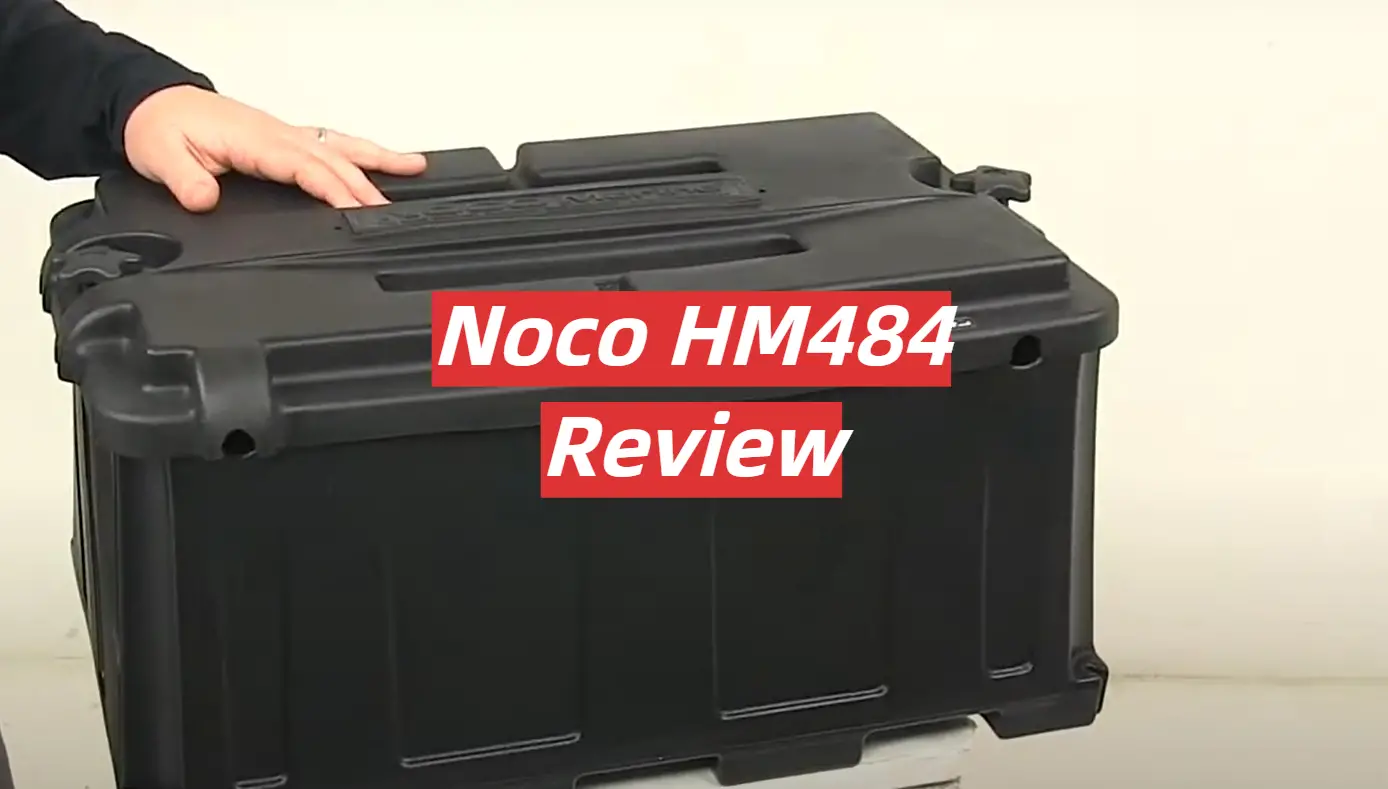
Leave a Reply